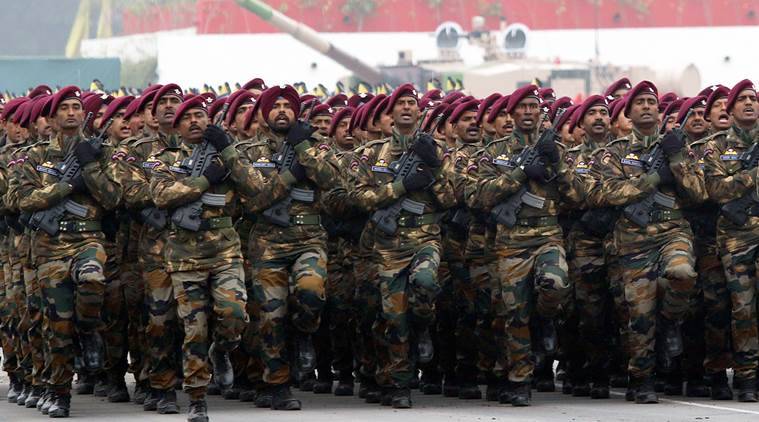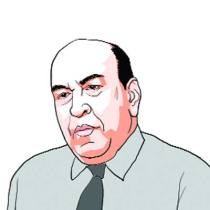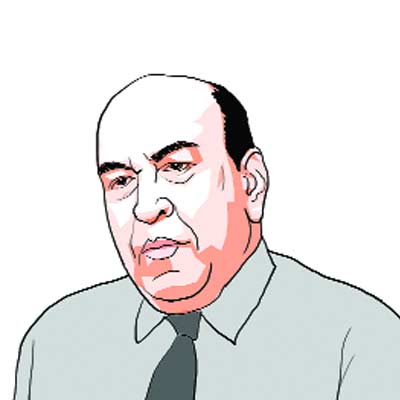The wrong reform
Suggestion that rank of brigadier be eliminated, command and control be restructured are ill-informed.

Most numerical strengths quoted in these write ups are erroneous — they relate to light divisions, which do not exist in the Indian Army except in the counter-insurgency forces of the Rashtriya Rifles. (Representational photo)
There was a time when the Indian Army’s structural and organisational changes took place under considerable secrecy. No longer. Every other day, ill-informed reports appear, mostly authored by writers who may never have understood the legitimacy and time-tested standing of some organisations, ranks and appointments, which contribute to the army’s command and control and decision-making. Two recent reports related to reorganisation are being questioned and discussed by India’s military community.
The first seeks the elimination of the one-star rank of brigadier with potentially the two-star rank of major general being considered for the first level of command above the unit level. It also speaks of the intent to have all officers of the army superannuating at least at the rank of major general, by time scale or selection. Another report, which appears to flow from the first, relates to the operational and organisational restructuring of the army. It reflects how a study is being undertaken to remove the division headquarters (HQ) from the hierarchy of formations that exercise command and control.
Most numerical strengths quoted in these write ups are erroneous — they relate to light divisions, which do not exist in the Indian Army except in the counter-insurgency forces of the Rashtriya Rifles. Indian Army divisions are usually never less than 17,000 in strength (as against the reported 10,000) as they also have units of all Arms and Services. One report states that the proposals include retaining the division HQ and the division as an entity only within 15 and 16 Corps in J&K, the three strike corps, 1, 2 and 21, and the mountain strike corps, that is about 16-18 divisions not including the counter-insurgency forces.
First, a comment on the manner of the change. The proposals are obviously budget-driven because the current, and potentially future, defence budget (1.47 per cent of the GDP) cannot support an army of 1.3 million without seriously affecting funds for capital expenditure. Second, the approach appears driven more by personnel management than capability based upon real threats. The idea is to have more appointments in the rank of major general by tailoring command appointments with resources half-way between what a one- and two-star officer currently commands. With this it is intended to have more officers achieving aspirations of two-star rank, with commensurately lower responsibility.
Such organisational changes do not occur through permutations and combinations to suit personnel management but rather on the basis of conceptual and doctrinal trials. A prime example was the creation of the Reorganised Army Plains Infantry Division (RAPID) in 1987, which brought about the induction of an armoured brigade into selected infantry divisions and other changes to meet Pakistan’s expanded armoured threat. It was the culmination of a long study and examination commencing in 1975 with the Experts Committee headed by Lt Gen (later General) Krishna Rao, with Maj Gen K Sundarji (later General) as a member.
No doubt the army leadership is going by the rationale that in view of tactical nuclear weapons being introduced in the battle zone, the parameters have changed. Smaller formations with just 4-5 infantry battalions with some matching support will present smaller targets and retain the capability to strike up to limited distances, as against the concept of deep thrust, defunct in a battlefield with a nuclear overhang. Another rationale in support of the proposed changes is a doctrine many armies around the world are favouring: Swarming by multiple small forces, thus creating greater deception and forcing a divided response by an adversary. The proposed task forces (TFs) would still need artillery and engineer support with signals remaining an inherent HQ element. The division of artillery and engineer support will require another major tampering with organisations which will militate against the neater tailor-made unit and sub-unit based support which currently exists. That will add complexity rather than the simplicity being sought. Anyway, offensive forces such as the strike corps are not being considered for reorganisation, although they are the ones which are lumbering. Reorganisation in their case would provide far better flexibility with their taking the battle into adversary territory.
Four other aspects need consideration. First, the command and control of the larger number of TFs than the number of division size forces by the corps HQ. Many of the support resources currently under the division HQ would revert to the corps HQ. Pre-location of such resources with the TFs would be necessary, while retaining control at the corps HQ with need-based release. This will make decision-making far more difficult.
The second issue is personnel management itself, which will witness greater complexity. There will be a need to grade the command appointments of major generals as some will command TFs and others, divisions. Whether this will provide a level-playing field for further promotion is an aspect bound to come up for legal scrutiny. Third, many of the divisions at the northern borders also perform counter insurgency duties by remaining split. The TF system will cause numerous functional problems for them. The fourth area relates to increasing the teeth-to-tail ratio, taking a line from China’s PLA. In 1998, a 50,000 cut in the non-field forces was decided and was under implementation until the Kargil War cut it short. The approach did not involve any large scale tampering as it only scaled off the bloated strength from organisations away from the battlefield.
If the army leadership is seriously seeking better esteem for its officers the non-functional financial upgradation is a better alternative. It won’t create undesirable organisational turbulence and the social challenges can be far easier met than the functional ones arising from forced organisational change.
If the army desires to overcome its shortage of officers in lower ranks and have more officers at the unit level and less at the HQ level, then this is definitely not the right approach.
The writer, a former corps commander of the Srinagar-based 15 Corps, is associated with Delhi Policy Group and Vivekananda International Foundation.
For all the latest Opinion News, download Indian Express App
More From Syed Ata Hasnain
- Pieces of peacePeace initiatives on LoC, and internally in J&K, must be enthusiastically welcomed, but not taken at face value..
- New shades of an old conflictEmergence of credible threats in ‘rear of rear areas’ points to a transformation in threat pattern. As Pakistan’s provocation changes, India’s response must be different…
- Don’t suspend disbeliefUS President’s censure notwithstanding, Pakistan continues to mainstream terror groups. India cannot let down its guard...







































No hay comentarios:
Publicar un comentario